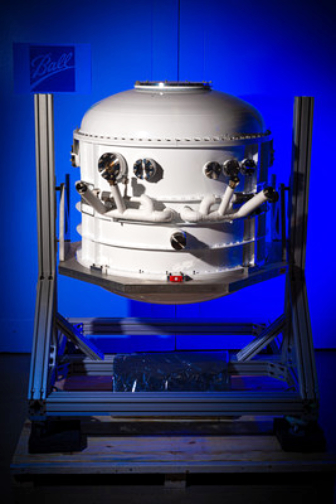

Ball Aerospace recently delivered a cryostat to the University of Arizona for NASA’s Galactic/Extragalactic Ultralong-Duration Balloon Spectroscopic Terahertz Observatory (GUSTO), a long-duration balloon mission that will map out parts of the Milky Way and Large Magellanic Cloud galaxies to determine the life cycle of interstellar gas, witness the formation and destruction of star-forming clouds, and understand the dynamics and gas flow in the vicinity of the center of the Milky Way.

The Ball-built cryostat is a low-heat leak tank that contains liquid helium and is designed to keep the GUSTO instrument cool during the entire length of the planned balloon flight.
GUSTO, which is part of NASA’s Astrophysics Explorers Program, is scheduled to launch from Antarctica in 2021. The University of Arizona’s Chris Walker is the GUSTO mission principal investigator. Johns Hopkins University Applied Physics Laboratory will provide the mission operations.
Ball has more than 40 years of experience developing cryogenic spaceflight systems and more than 25 years of developing cryocoolers. The cryogenic experience includes cryogenic cooling systems such as cryostats, cryoradiators, cryocoolers and thermoelectric coolers. For example, Ball developed the cryocooler for NASA’s Thermal Infrared Sensor-1 (TIRS-1) and TIRS-2. TIRS-1 is flying onboard Landsat 8 and Ball delivered the TIRS-2 cryocooler in 2018 to NASA Goddard for the Landsat 9 satellite.
Dr. Makenzie Lystrup, VP and GM, Civil Space, Ball Aerospace, said the company is honored to work with the University of Arizona on NASA’s GUSTO mission, which will measure emissions form the interstellar medium, or the cosmic material found between stars. Ball is an industry leader in designing and developing cryogenic systems, which includes our cryogenic center of excellence for the development of unique cryogenic products such as the cryostat for the GUSTO mission

